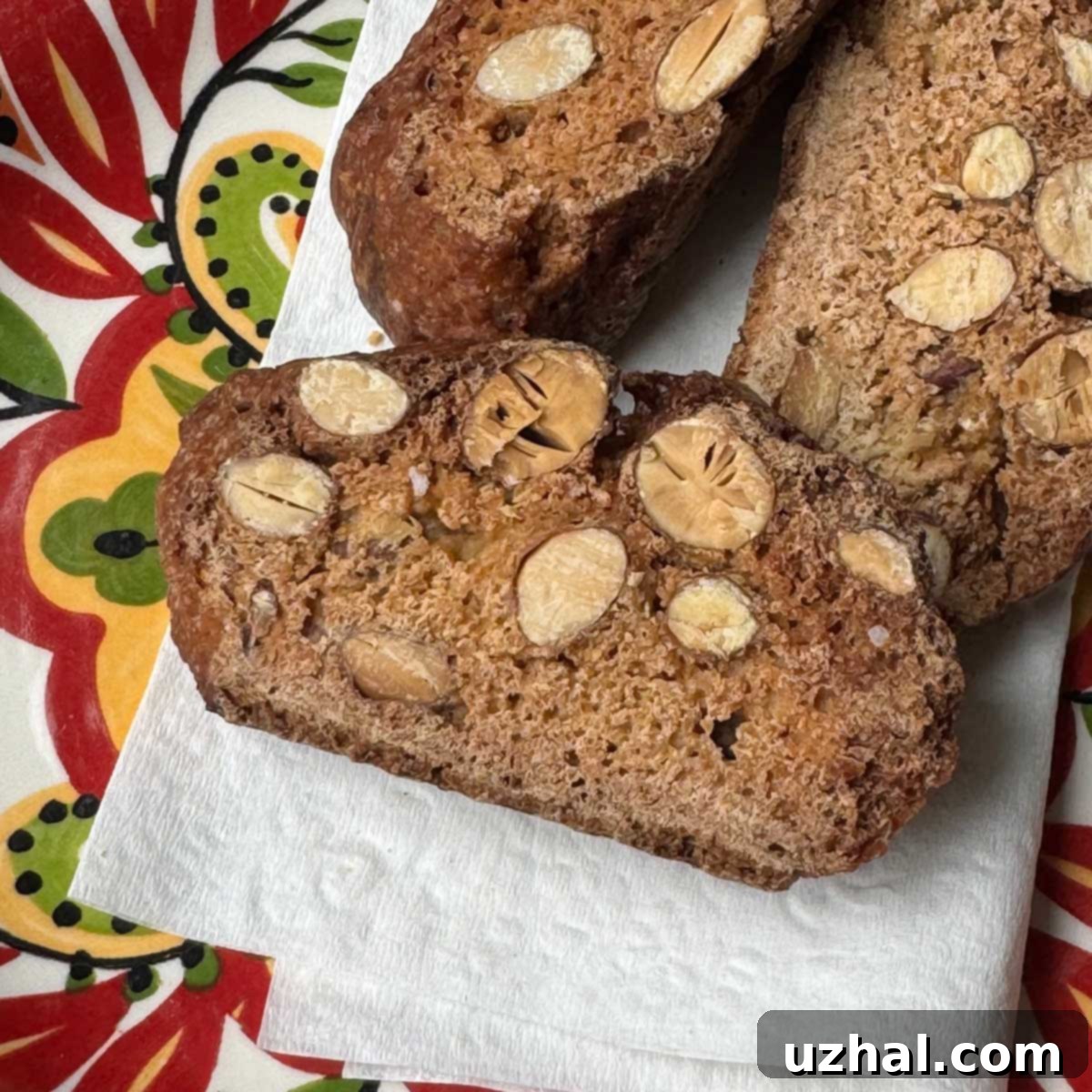Authentic Toasted Almond Cantuccini (Italian Biscotti) Recipe – Classic & Low-Carb Options
There are certain memories that linger, especially those tied to the senses. For me, a trip to Florence years ago left an indelible mark, not just with its breathtaking art and architecture, but with its exquisite culinary traditions. It was there, amidst the bustling markets and charming cafes, that I first truly fell in love with what Italians lovingly call cantuccini – known more widely in the U.S. as biscotti. This experience holds a special place in my heart, a comforting anchor, particularly now as health reasons have made extensive travel a distant dream. Recreating these flavors in my kitchen allows me to revisit those cherished moments, one delightful bite at a time, bringing a piece of Tuscany home.
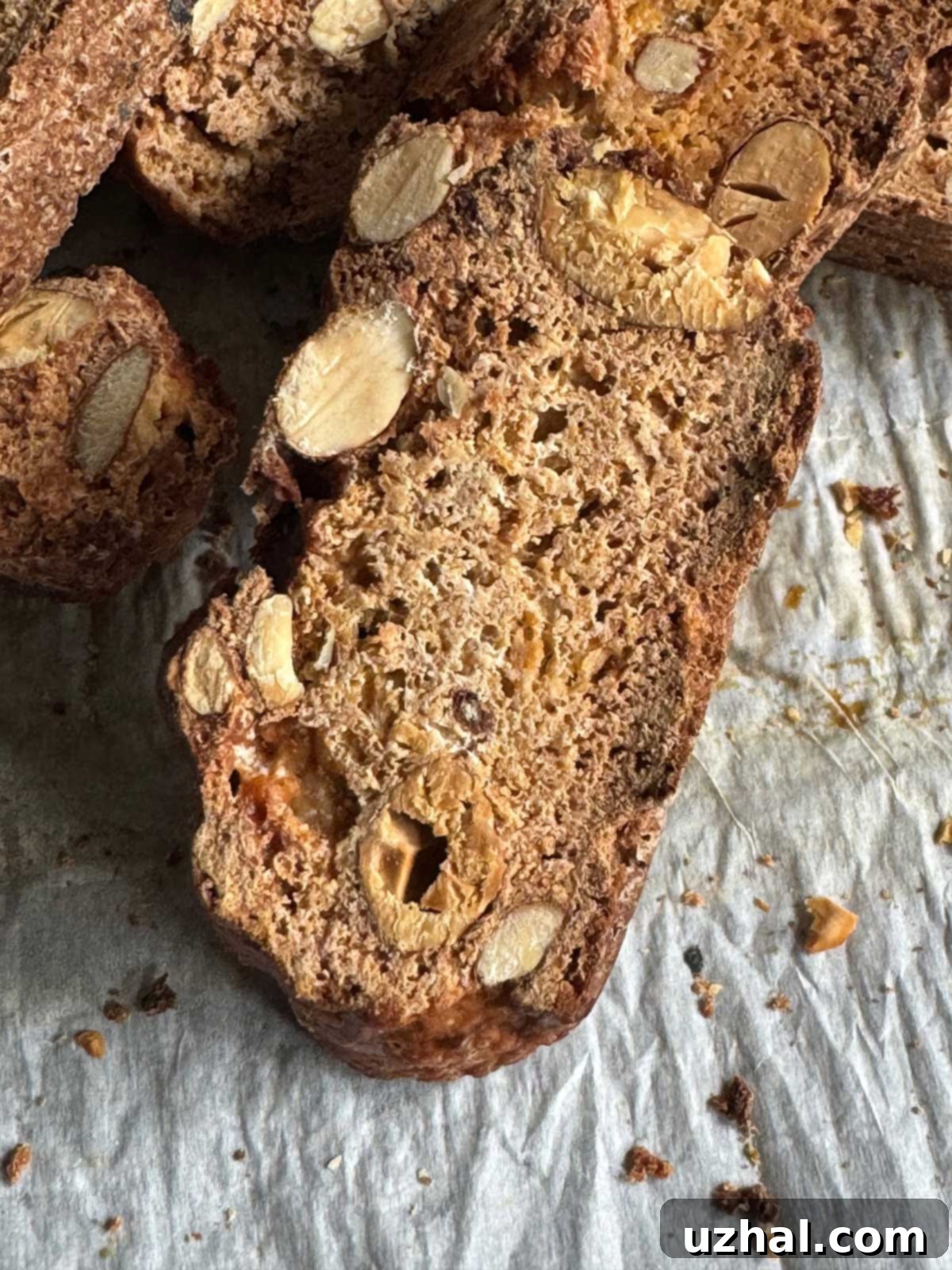
Upon returning from Italy, I was eager to bake these twice-baked almond delights myself. I quickly learned that while “biscotti” is a general term for any cookie that is twice-baked, the specific almond-studded, hard cookie we often refer to as biscotti in America is actually called cantuccini in Tuscany, particularly around Prato and Florence. The name distinction became a fascinating detail in my culinary journey. My initial recipe, first shared years ago, featured Coconut Palm Sugar Cantuccini, harnessing the then-trending coconut sugar to impart a subtle, almost burnt caramel note to the cookies. Today, this adaptable recipe continues to evolve with various sweeteners. Recently, I’ve perfected a lower-carb version using Truvia brown sugar and a remarkable low-carb flour called Fiber Gourmet, proving that these traditional treats can truly cater to diverse dietary preferences without sacrificing flavor or texture. The beauty of these cookies lies in their simplicity, versatility, and their ability to transport you with every crunch. Below, you’ll see one of the logs before slicing and the second bake.
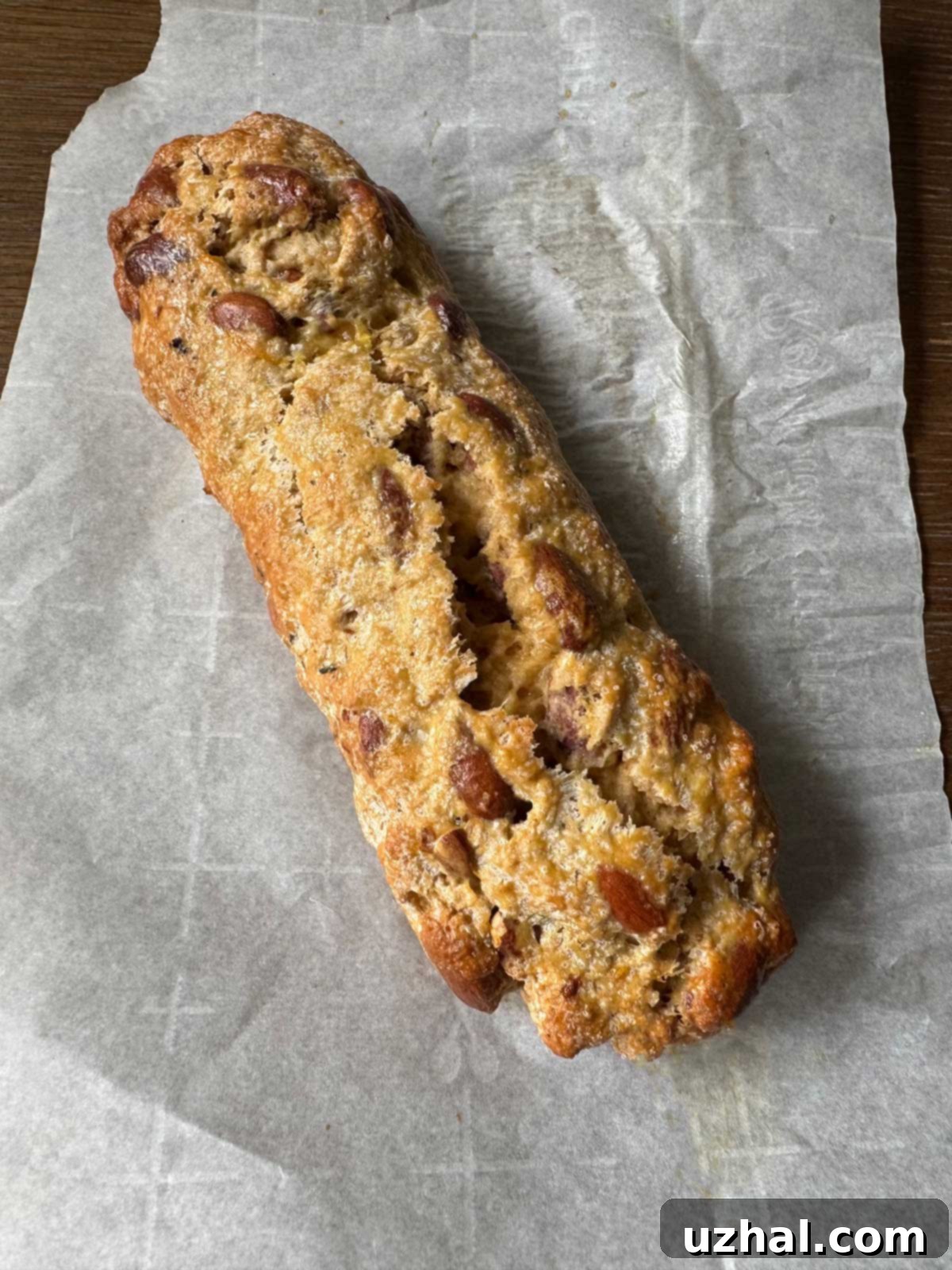
The Heritage of the Recipe: A Nod to Tradition and Friendship
The foundation of this beloved cantuccini recipe comes from a truly wonderful source: Susan, the heart behind the Food Blogga. Susan was one of the kindest food bloggers I ever had the privilege of knowing. Her Italian roots ran deep, and this particular biscotti recipe was a cherished family heirloom, passed down through generations. It was a traditional almond recipe, imbued with the warmth and history of her family kitchen. I deeply regret not having had the chance to know Susan better before her untimely passing, but her generosity and spirit continue to resonate through her recipes. It’s a testament to her legacy that I still turn to her traditional methods, sharing a piece of her culinary wisdom with others. Interestingly, while the Italian tradition often leans towards “cantuccini” for these specific cookies, Susan’s family, like many Italian-Americans, affectionately called them “biscotti.” In my own kitchen, I embrace both names, honoring both the regional Italian nomenclature and the personal history embedded in the recipe, ensuring her legacy lives on with every batch.
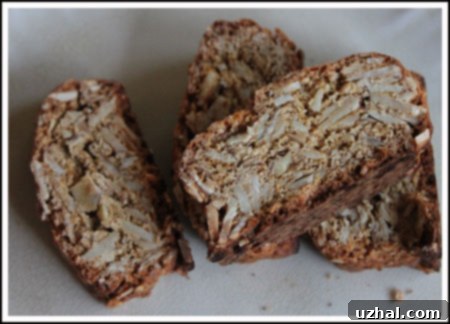
Mastering the Dough: Tips for Perfect Cantuccini Texture
This particular version of Susan’s recipe yields a slightly smaller batch, making it perfect for home bakers and those new to cantuccini. When you first combine the ingredients, the dough might appear quite dry and crumbly, especially if you’re experimenting with coconut sugar or fiber-rich flours like Fiber Gourmet. Please don’t be alarmed; this is a common characteristic of traditional cantuccini dough. Unlike softer cookie doughs, biscotti dough is meant to be firm, which is essential for achieving that characteristic crisp, dry texture after the second bake. The key is to be patient and trust the process. You’ll need to use your hands to really work the mixture, pressing it firmly and kneading it until it gradually comes together into a cohesive ball. The warmth from your hands and the slight friction will help the dough to bind. If, after a few minutes of hand-kneading, the dough still feels excessively dry and refuses to come together, you can drizzle in a very small amount of extra beaten egg – a teaspoon at a time – until the desired consistency is achieved. Avoid adding too much liquid at once, as this can make the dough sticky and difficult to handle. The ideal texture is firm but pliable, just right for shaping into logs that will hold their form through baking.
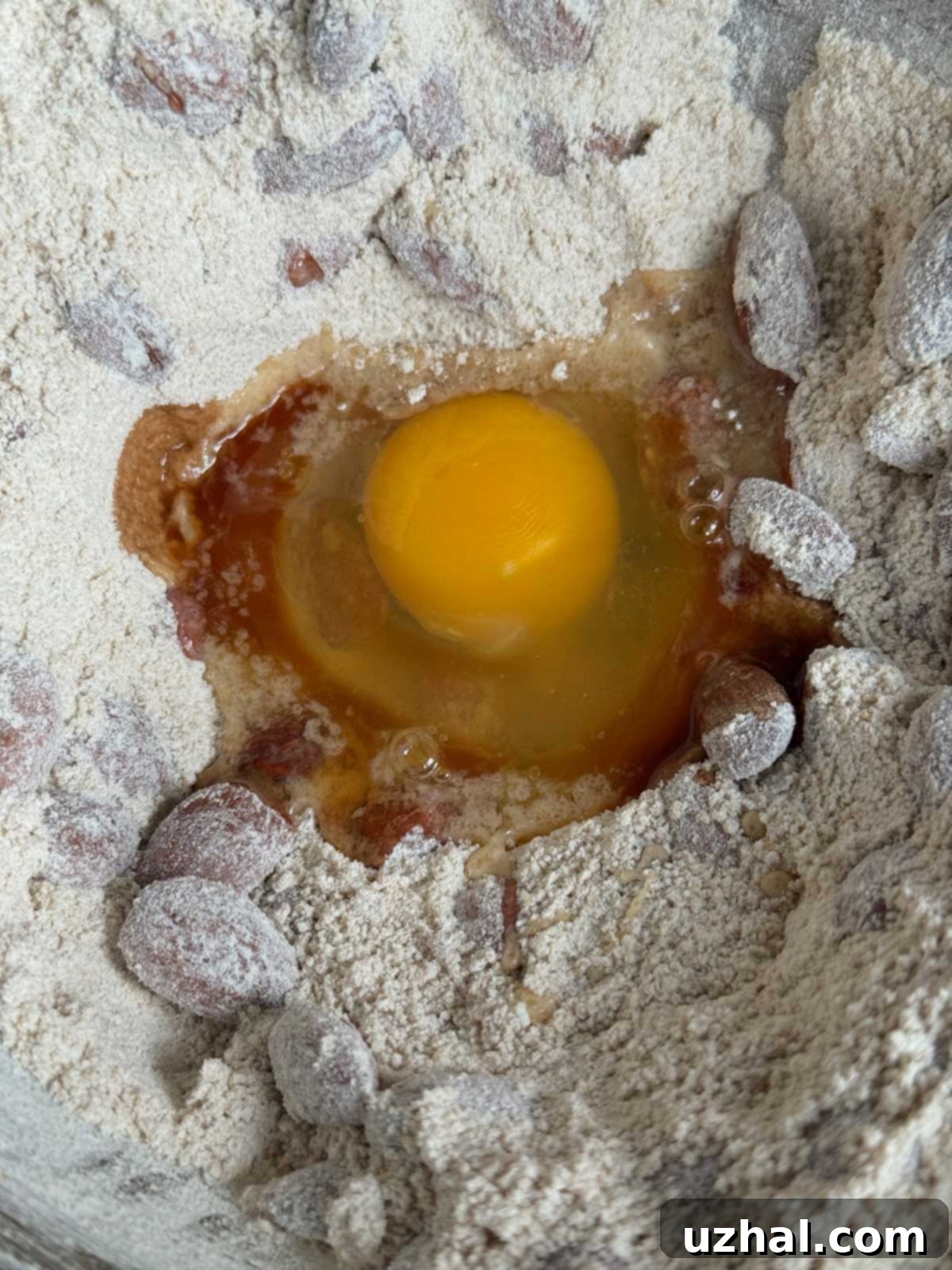
Flavor Profile: A Symphony of Taste in Every Bite
The magic of these toasted almond cantuccini lies in their nuanced and comforting flavor profile. Each ingredient plays a crucial role in creating a harmonious blend that is both classic and deeply satisfying, evoking the rustic elegance of Italian baking. You’ll immediately notice the subtle yet distinctive notes of **burnt caramel**, particularly if you opt for coconut palm sugar, which caramelizes beautifully during baking. This adds a depth and richness that sets these biscotti apart from simpler cookies. Bright, fragrant **orange zest** infuses the dough with a delightful citrusy aroma and a hint of tang, perfectly complementing the sweetness and preventing the flavors from becoming one-dimensional. Of course, **almonds** are the undisputed star here – toasted to perfection, they offer a rich, nutty flavor and a satisfying, wholesome crunch that defines a true cantuccini. Finally, a touch of warm **cinnamon** ties all these elements together, adding a comforting, spicy undertone that makes these cookies utterly irresistible and memorable. The combination is a testament to the simple elegance and timeless appeal of traditional Italian baking.
Ingredients Spotlight: Crafting Your Ideal Biscotti
Achieving the perfect cantuccini, whether you prefer the classic version or a low-carb alternative, begins with understanding your ingredients and how they contribute to the final product. Thoughtful selection ensures optimal flavor and texture:
- Almonds: The foundation of this recipe and a hallmark of authentic cantuccini. Using whole or sliced almonds offers a delightful textural contrast and a rich, nutty flavor. Toasting them beforehand is a crucial step that intensifies their aroma and deepens their taste, preventing them from tasting raw or bland in the finished cookie. This simple step elevates the entire cookie experience.
- Sweeteners: This recipe is incredibly versatile when it comes to sweetening. Traditional recipes often use granulated sugar, but we explore several options. Coconut Palm Sugar provides a unique, slightly less sweet profile with a wonderful hint of caramel that develops beautifully during baking. Brown Sugar (light or dark) will yield a slightly softer, chewier biscotti with a richer molasses flavor. For a low-carb alternative, Truvia Brown Sugar Blend works exceptionally well, mimicking the taste and texture without the high sugar content. Experiment to find your favorite, keeping in mind that different sugars can slightly alter the dough’s moisture content and how it handles.
- Orange Zest: Fresh orange zest is essential here, providing a vibrant, aromatic lift that brightens and balances the richness of the almonds and the sweetness of the sugar. It’s far superior to orange extract in this recipe, offering a natural brightness that permeates the entire cookie. Don’t be shy about really pressing the zest into the sugar as instructed – this helps release its potent, fragrant oils.
- Flour: All-Purpose Flour is the standard, creating a robust dough that holds its shape well and bakes to a classic texture. For those seeking a lower-carb option, Fiber Gourmet flour is a fantastic choice. This innovative flour blend allows for a significantly reduced carbohydrate count while maintaining a texture surprisingly close to traditional flour, making it ideal for health-conscious bakers. If using other low-carb flours like almond or coconut flour, be prepared to adjust liquid amounts and expect a slightly different dough consistency, as they absorb moisture very differently.
- Eggs and Vanilla Extract: Large or jumbo eggs bind the dough and provide essential moisture and richness. The pure vanilla extract adds another layer of warmth and complexity, enhancing the overall aroma. Ensure your eggs are at room temperature for better and smoother incorporation into the dry ingredients.
- Baking Powder & Kosher Salt: These are critical for the structure and flavor balance of your cantuccini. The baking powder helps the logs rise slightly during the first bake, contributing to the airy yet dense texture. Kosher salt, with its larger crystals, enhances all the other flavors, preventing the cookies from tasting flat and bringing out the best in the almonds and citrus.
Baking Your Cantuccini to Perfection: The Twice-Baked Secret
The characteristic crispness, delightful crunch, and long shelf life of cantuccini come from their unique twice-baked process, a method that sets them apart from ordinary cookies. Follow these steps carefully to ensure your biscotti are perfectly golden and crunchy, just like those found in Italian bakeries:
- Preheating and Almond Toasting: Start by preheating your oven to 350°F (175°C). Line a large cookie sheet with parchment paper or non-stick foil; this prevents sticking and makes cleanup a breeze. Toasting the almonds first is non-negotiable for superior flavor and texture. Arrange them in a single layer and toast for 8-10 minutes. This step intensifies their nutty essence without burning. Let them cool completely before adding them to the dough.
- Mixing Dry Ingredients: In a large bowl, combine your chosen sugar with fresh orange zest. Take a moment to thoroughly mix and press the zest into the sugar with the back of a spoon; this action releases its fragrant oils, infusing the sugar with bright citrus notes. Stir in the cinnamon, baking powder, Kosher salt, and the cooled toasted almonds. Finally, gradually mix in the all-purpose (or Fiber Gourmet) flour until just combined.
- Incorporating Wet Ingredients and Forming the Dough: Make a well in the center of your dry ingredients. In a separate small bowl, whisk the eggs and vanilla extract together, then pour this mixture into the well. Begin mixing; the dough will initially be very thick and dry. This is where your hands come in! Lightly flour your hands and knead the mixture, squeezing and pressing firmly until it forms a cohesive ball. This might take a few minutes of consistent effort. If it feels excessively dry even after firm kneading (especially with specific low-carb flours or if using smaller eggs), add a tiny bit of extra beaten egg, a teaspoon at a time, until it just comes together. Avoid over-wetting. Divide the formed dough ball into two equal pieces.
- Shaping the Logs: On a lightly floured surface or a large sheet of non-stick foil or parchment paper, shape each piece of dough into a log. Aim for logs approximately 10 inches long, 2 inches wide, and ¾ of an inch high. Wetting your hands slightly can make shaping easier and prevent the dough from sticking. Arrange the two logs on your prepared baking sheet, ensuring enough space between them (about 3-4 inches), as they will spread during the first bake.
- First Bake (The “Biscotti” Stage): Brush the tops of the logs with a lightly beaten egg wash – this gives them a beautiful, golden sheen and helps with browning. Bake for about 35 minutes at 350°F (175°C), or until the logs are golden brown, firm to the touch, and shiny on top. Remove them from the oven and transfer them to a wire rack to cool for about 15-20 minutes. This cooling period is crucial for the logs to firm up enough for clean, non-crumbly slicing. Keep your oven on!
- Slicing and Second Bake (The “Cantuccini” Stage): After the initial cooling, carefully transfer one log to a cutting board. Using a large, sharp serrated knife, slice the loaves diagonally into ¾-inch thick cookies. The serrated edge is key to preventing crumbling. Arrange these slices on their sides (cut-side up) back onto the baking sheets. Now, here’s the secret to their signature crunch: turn off your oven. Place the sliced cantuccini back into the warm, turned-off oven, closing the door, for 30-60 minutes. The longer they stay in the oven, the harder and crispier they will become, achieving that signature twice-baked texture. This slow drying process perfectly dehydrates them, giving them their characteristic snap.
- Final Cooling and Storage: Once the second bake is complete, remove the cantuccini from the oven and let them cool completely on a wire rack. They will continue to crisp up as they cool down to room temperature. Store these delightful treats in an airtight tin at room temperature, where they will remain fresh and crunchy for several weeks, ready to transport you back to the charming streets of Florence with every perfect bite.
This recipe yields approximately 24 delicious cantuccini, perfect for sharing or savoring all to yourself!
Serving Suggestions: Enjoying Your Homemade Treat
The beauty of homemade cantuccini extends beyond their irresistible flavor; it’s also in how you choose to enjoy them. Traditionally in Tuscany, cantuccini are served after a meal, often dipped into a small glass of Vin Santo, a sweet dessert wine. The wine softens the crisp cookie, creating a delightful texture and a harmonious blend of flavors that is both elegant and satisfying. However, their versatility means they pair beautifully with a variety of beverages for any occasion:
- Coffee & Espresso: A classic and universally loved pairing. The robust, often bitter, flavors of coffee, especially a strong espresso or a rich cappuccino, provide a wonderful contrast to the sweetness and satisfying crunch of the biscotti, making them an ideal accompaniment for your morning ritual or an afternoon pick-me-up.
- Tea: For a more subtle indulgence, serve your cantuccini with a warm cup of black, herbal, or green tea. The gentle warmth helps to slightly soften the cookie, creating a comforting and less intense treat that’s perfect for a quiet moment.
- Milk: A simple yet satisfying option, particularly appealing to children or those who prefer a non-alcoholic pairing. Dipping them in milk softens them perfectly, making them easier to eat and incredibly delicious.
- Dessert Platter: Cantuccini also make an elegant and textural addition to any dessert platter, perhaps alongside fresh fruit, soft cheeses, or other small pastries. Their unique texture and distinct flavor stand out beautifully, adding a touch of Italian flair.
No matter how you choose to enjoy them, these Toasted Almond Cantuccini are sure to bring a touch of Italian charm and a moment of pure bliss to your home.
- Toasted Almond Cantuccini
- Sweet and Salty Double Nut Toffee Brownie Bars
- Coconut Palm Sugar Chocolate Chip Cookies
- Best Gingerbread Biscotti Recipes
- Updated Palm Beach Brownies
Recipe
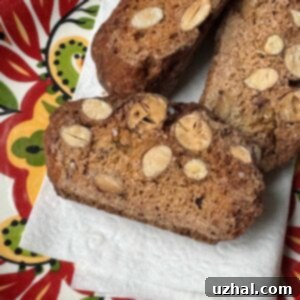
Coconut Palm Sugar aka Coconut Sugar Cantuccini
Anna
Pin Recipe
Ingredients
- 2 cups whole almonds or sliced almonds
- ⅔ cup tightly packed sugar (can use coconut, brown or even brown Truvia)
- 1 teaspoon orange zest
- ¼ teaspoon ground cinnamon
- 1 ¼ teaspoons baking powder
- ¼ teaspoon Kosher salt
- 1 ⅔ cups all purpose flour 210 grams
- 2 large eggs (or jumbo)
- ¾ pure vanilla extract
- An egg lightly beaten for brushing tops of loaves
Instructions
-
Preheat oven to 350 degrees F. Line a large cookie sheet with parchment paper or non-stick foil
-
Place almonds in a single layer on cookie sheet and toast in the oven at 350 degrees F. for 8-10 minutes. Remove and set aside to cool.
-
In a large bowl using a large spoon, mix the sugar with the orange zest. As you mix, press the zest with the back of spoon to release its essence. Stir in the cinnamon, baking powder, salt and toasted almonds. When well mixed, stir in the flour.
-
Make a well in the dry mixture. Whisk the eggs and vanilla together in the well, then stir everything together. Mixture will be very thick and dry, so using lightly floured hands, keep squeezing the mixture until it comes together in a ball. If you used large eggs as opposed to jumbo, the batter might be even a little bit dryer. It should still bake up just fine. Divide that ball into 2 equal pieces.
-
On a lightly floured surface or a large sheet of non-stick foil or parchment, shape one piece of dough into a log shape that is approximately 10 inches long, 2 inches wide, and ¾ of an inch high. Wetting your hands with a little water makes this process a little easier. Repeat with remaining dough so that you have two big logs. Place the logs on a baking sheet spacing them out as much as you can to leave room for spreading. Each log will spread out about another inch or so.
-
Brush tops with lightly beaten egg.
-
Bake at 350 degrees F for 35 minutes, or until the tops of the loaves are dark and siny. Cool on a rack for about 15 minutes before slicing. Keep the oven on during the 20 minute cooling period.
-
After 20 minutes, turn off the oven. Place a loaf on a cutting board, and using a large serrated knife, slice cookies ¾ of an inch thick on the diagonal. Place slices on their sides back on to the baking sheets; place in the still warm oven with the temperature off and the door closed for 30-60 minutes. The longer they stay in the oven, the harder they will become. Remove from oven and cool completely before storing in a tin.
-
Makes about 24
